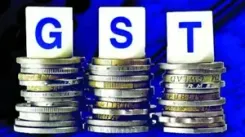Is Gold's 2025 Rally Among the Steepest Since the 1970s, with Asia Leading the Charge?

Synopsis
Key Takeaways
- Gold prices surged over 50% in 2025
- Asia leads the gold rally, driven by reserve diversification
- Political instability in Japan and China’s gold aspirations boost demand
- Global Gold ETF holdings surpass 450 tonnes
- India's gold imports reach 300 tonnes in Q3 2025
New Delhi, Oct 16 (NationPress) The rise in gold prices in 2025 stands out as one of the steepest increases since the 1970s, comparable to the bull runs witnessed in 1979–80, 2010–11, and 2020. This time, however, the rally is driven by Asia, supported by reserve diversification and official-sector demand, as highlighted in a report released on Thursday.
The remarkable ascent of gold this year has captured the attention of global markets, marking a rare and impressive increase of over 50 percent year-to-date, surpassing $4,000 on COMEX and reaching Rs 1,20,000 domestically.
This precious metal has achieved more than 35 new record highs this year, as investors flock to tangible assets amid ongoing global uncertainty. Silver has also reflected this trend, soaring over 60 percent year-to-date across various exchanges, according to a report by Motilal Oswal Financial Services.
What began as a cautious start to the year has evolved into a robust super cycle, fueled by a shift of capital from bonds and riskier investments into safer assets.
The rally in precious metals is supported by a stable dollar index below 100 and the appreciation of the rupee, which have both bolstered domestic prices.
“Markets are currently anticipating a 70 percent probability of U.S. Federal Reserve rate cuts in October and December, in light of weaker U.S. labor data and increasing fiscal concerns,” the report indicated.
Political instability in Japan following the election of fiscal dove Sanae Takaichi has further elevated global demand for safe havens, while China’s ambition to establish itself as a global gold custodian provides additional structural support.
“The impressive rally in gold reflects a convergence of macroeconomic shifts — from fiscal uncertainty and a softer dollar to strategic diversification by central banks. Asia is emerging as the center of this new monetary alignment,” stated Manav Modi, Analyst for Commodities and Currencies at Motilal Oswal Financial Services Ltd.
Meanwhile, global mining output has remained relatively stable in 2025, hindered by declining ore grades, environmental regulations, and escalating operational costs. Recycling has seen a modest uptick but continues to lag behind previous bull-market levels.
In contrast, demand has been strong, primarily driven by China, India, Turkey, and the Middle East, where currency devaluation and inflation have spurred record levels of safe-haven purchases.
The report reveals that global Gold ETF holdings have surpassed 450 tonnes, experiencing the most significant inflow since 2020. Central banks have acquired over 600 tonnes within the first nine months of the year.
Capitalizing on this trend, India imported 300 tonnes of gold and 3,000 tonnes of silver by the third quarter of 2025, the report noted.









